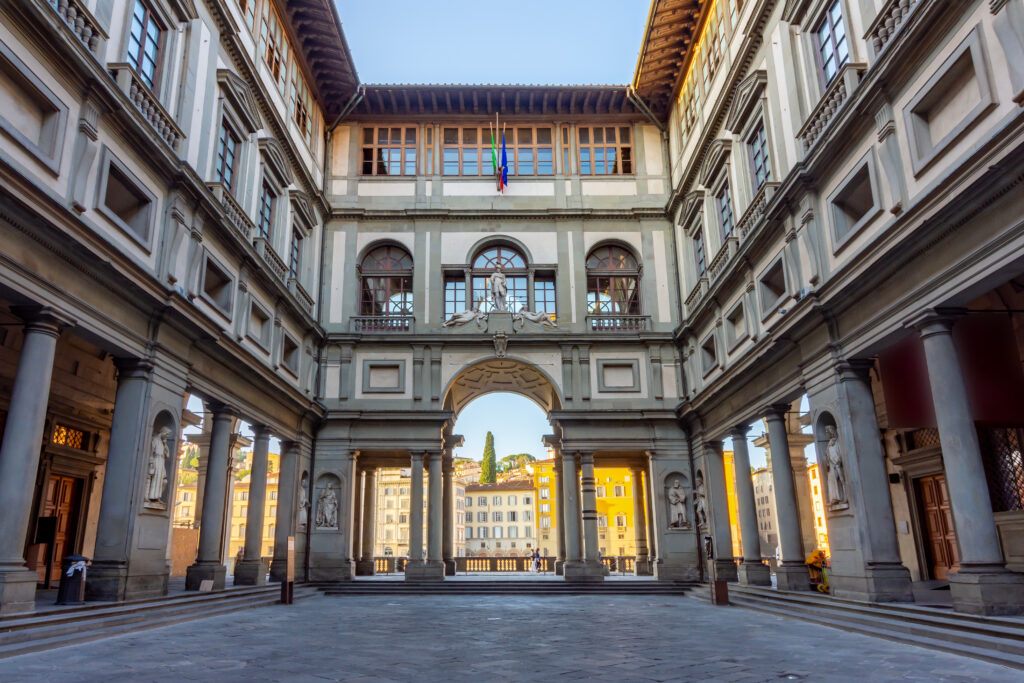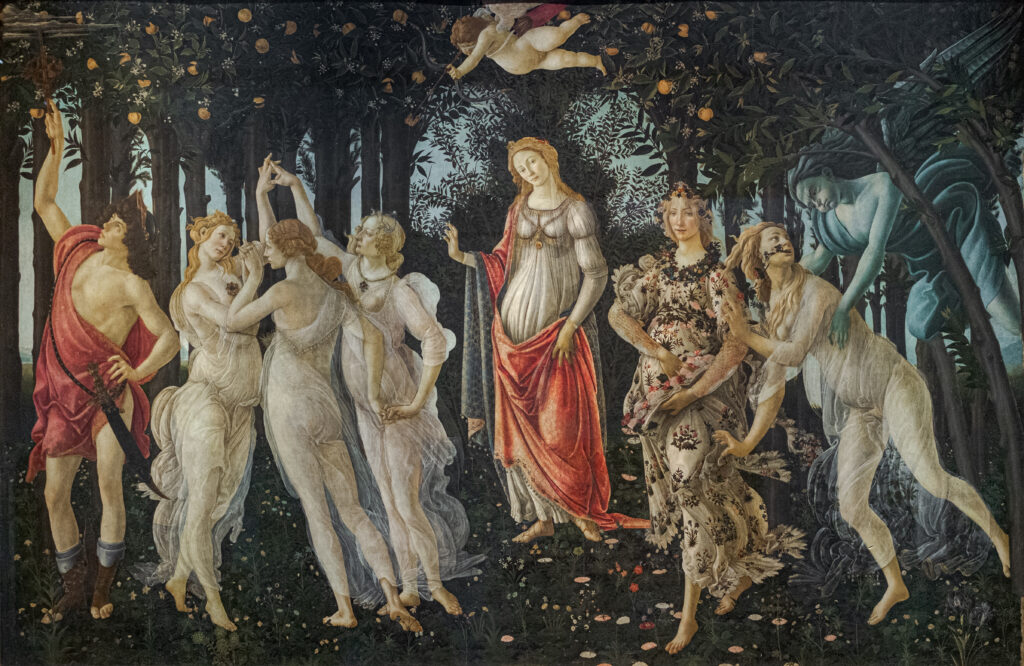Stepping into the Uffizi Galleries in Florence is like walking into a living history book. This iconic museum holds one of the most important collections of Renaissance art in the world and reflects centuries of Medici patronage, Florentine culture, and European history.

Origins and Medici Legacy
The Uffizi was commissioned in 1560 by Cosimo I de’ Medici and designed by Giorgio Vasari as administrative offices for Florence’s magistrates—hence the name “Uffizi,” meaning “offices.” Over time, the upper floors became the private gallery of the Medici family, displaying their extraordinary art collection. In 1584, Grand Duke Francesco I commissioned the Tribuna degli Uffizi, an octagonal chamber designed by Bernardo Buontalenti, to showcase the family’s most precious works.
When the Medici dynasty ended in the 18th century, Anna Maria Luisa de’ Medici ensured the family’s vast collection remained in Florence through the “Family Pact” of 1737, stipulating that these treasures would never leave Tuscany. By 1769, the Uffizi officially opened to the public, making it one of the oldest museums in the world.
Masterpieces and Highlights
The Uffizi’s halls are lined with masterpieces by Botticelli, Leonardo da Vinci, Michelangelo, Raphael, Titian, Caravaggio, and countless others. Botticelli’s The Birth of Venus and Primavera are among the gallery’s most famous works, while Leonardo’s Annunciation and Michelangelo’s Doni Tondo showcase the revolutionary ideas that defined the Renaissance. Beyond paintings, the museum houses ancient Roman sculptures, decorative arts, and drawings from the Medici collections.
The Architecture and Experience
The Uffizi building is itself a masterpiece of Renaissance architecture. Its long, narrow courtyard leads to the Arno River, creating a breathtaking perspective. The Vasari Corridor—once a private passageway for the Medici connecting the Uffizi to Palazzo Pitti via Ponte Vecchio—offers another glimpse into Florence’s history and the ruling family’s influence.
The 1966 Florence Flood: A Turning Point
On 4 November 1966, the Arno River burst its banks in one of the worst floods in Florence’s history. The Uffizi was inundated, with water and mud reaching several meters high. Priceless artworks, manuscripts, and sculptures were damaged or destroyed. The tragedy galvanized an international response: volunteers from around the world, known as the “Mud Angels,” came to Florence to rescue artworks and cultural heritage.
The flood not only prompted a massive restoration effort but also reshaped how museums worldwide approached conservation and disaster preparedness. Many of the Uffizi’s paintings—like Cimabue’s Santa Croce Crucifix—required decades of painstaking restoration. The event remains a powerful reminder of Florence’s resilience and the global commitment to safeguarding cultural treasures.
Modern Uffizi and Visiting Tips
Today, the Uffizi attracts over four million visitors annually. Recent renovations have expanded exhibition space and improved accessibility, while the Vasari Corridor is gradually reopening after restorations. To make the most of your visit, book tickets in advance to avoid long lines, and allow several hours to explore—rushing through would mean missing the museum’s nuances.
Visitors are encouraged to respect the artworks: recent incidents, including accidental damage during selfies, have reminded everyone of the importance of careful behavior. The museum continues to balance its role as a custodian of priceless art with the realities of modern tourism.

Why the Uffizi is Unmissable
A visit to the Uffizi is a journey through the heart of the Renaissance and Florence’s cultural soul. The combination of Medici history, architectural splendor, and world-class art makes it an essential stop on any Italian itinerary. Pair your visit with a stroll across Ponte Vecchio or an afternoon in the Boboli Gardens to round out your Florentine experience. Standing before Botticelli’s Venus or gazing through the windows toward the Arno, you’re not just looking at art—you’re stepping into a story that has survived dynasties, wars, and even devastating floods to continue inspiring the world.

